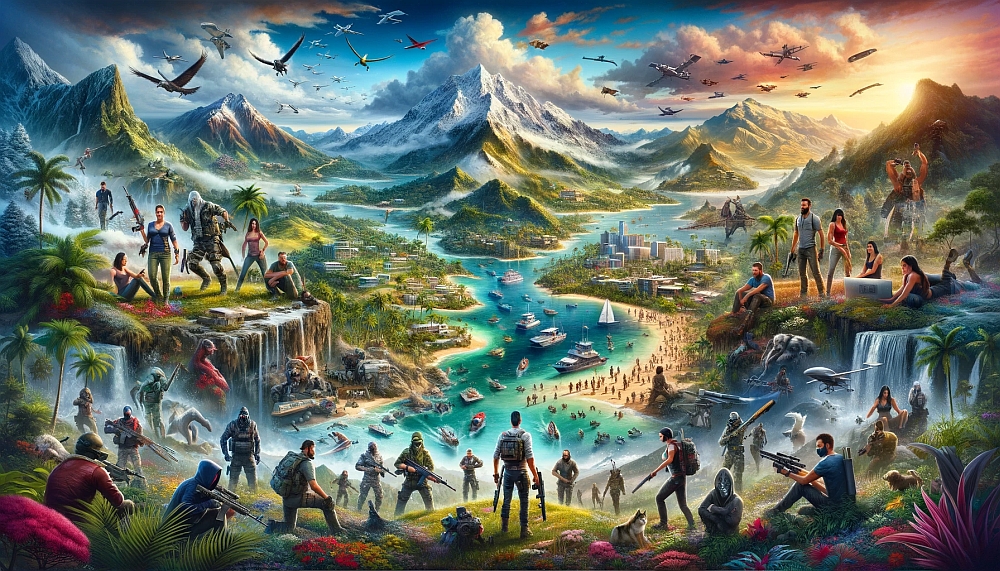
The Far Cry series, developed by Ubisoft, has carved a niche for itself in the hearts of gamers worldwide, thanks to its unique blend of breathtaking locales, intense action, and compelling storytelling. This blog post takes you on a journey through the evolution of this beloved series, exploring its highs, its innovative features, and the impact it has had on the gaming landscape.
The Humble Beginnings
The journey began in 2004 with the original Far Cry, a game that set the stage for the series’ signature elements: open-world exploration, advanced AI, and, of course, a tropical paradise setting. Developed by Crytek and published by Ubisoft, the first game was praised for its graphics and sandbox gameplay, allowing players unprecedented freedom in approaching objectives.
A Legacy of Innovation
As the series progressed, each installment introduced new elements that expanded on the formula. Far Cry 2, released in 2008, transported players to the African savannah, offering a vast open world filled with danger and opportunity. It introduced a dynamic weather system and a realistic fire propagation mechanic, adding layers of strategy to the gameplay.
Far Cry 3, arguably the series’ high point, came out in 2012 and took players to the Rook Islands, a pirate-infested tropical paradise. It refined the open-world formula, offered a compelling narrative, and introduced one of gaming’s most memorable antagonists, Vaas Montenegro. This installment was a critical and commercial success, praised for its engaging story, well-designed missions, and immersive world.
Venturing into New Territories
The series didn’t stop there; Far Cry 4 (2014) took the action to the Himalayas, introducing vertical gameplay and a rich cultural tapestry to explore. Far Cry 5 (2018) brought the series closer to home, setting its story in the fictional Hope County, Montana, and tackling themes of fanaticism and freedom. Each new game sought to push the boundaries of the open-world genre, introducing new mechanics, such as the Guns for Hire system in Far Cry 5, which added a new layer to combat and strategy.
Spin-offs and Innovations
Apart from the main titles, the series has seen several spin-offs and standalone expansions, such as Far Cry 3: Blood Dragon, an 80s sci-fi themed adventure, and Far Cry New Dawn, a post-apocalyptic take on the Far Cry 5 world. These titles allowed Ubisoft to experiment with new themes and gameplay mechanics, keeping the series fresh and engaging.
The Impact on Gaming
The Far Cry series has left an indelible mark on the gaming industry. Its open-world design has influenced countless other games, and its emphasis on narrative has shown how story and action can be seamlessly blended. The series’ ability to reinvent itself with each installment, exploring new settings and themes, has kept it relevant in a fast-evolving industry.
The Future of Far Cry
As we look to the future, the Far Cry series shows no signs of slowing down. With rumors of new installments and potential settings swirling, one thing is clear: Ubisoft has created a franchise that can continually evolve, surprising and delighting players with each new adventure. The Far Cry series remains a testament to the power of immersive storytelling, innovative gameplay, and the endless possibilities of the open-world genre.
In conclusion, the Far Cry series has grown from a single innovative shooter to a cornerstone of open-world gaming, offering players around the globe the chance to explore, fight, and immerse themselves in meticulously crafted worlds. As long as there are new territories to explore and stories to tell, the call of the wild that is Far Cry will continue to resonate with gamers everywhere.

